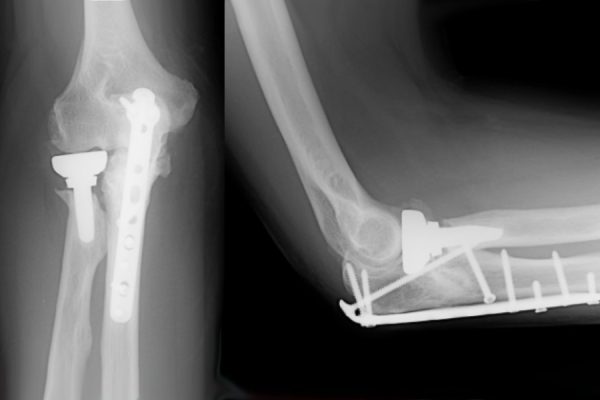Overview
lbow surgery can address various conditions affecting the elbow joint. Here’s an overview of some common types of elbow surgeries and what they typically involve:
Types of Elbow Surgery
Tennis Elbow Surgery (Lateral Epicondylitis):
- Procedure: If rest and therapy fail, surgery may involve removing degenerated tissue and repairing the tendon.
- Recovery: Physical therapy is often needed, and recovery can take several months.
Golfer’s Elbow Surgery (Medial Epicondylitis):
- Procedure: Similar to tennis elbow, this surgery focuses on repairing the tendons on the inside of the elbow.
- Recovery: Similar timeline and therapy needs as tennis elbow surgery.
Elbow Fracture Surgery:
- Procedure: Fractures may require plates, screws, or pins to stabilize the bones. The approach depends on the fracture type and location.
- Recovery: Healing can take 6 to 12 weeks, followed by rehabilitation to regain strength and range of motion.
Ulnar Nerve Transposition:
- Procedure: This surgery relieves pressure on the ulnar nerve, which can cause numbness and pain in the arm and fingers. The nerve is repositioned to prevent irritation.
- Recovery: Patients typically engage in therapy to restore function, with recovery taking several weeks.
Elbow Joint Replacement:
- Procedure: In cases of severe arthritis or joint damage, either a partial or total elbow replacement may be performed to relieve pain and improve function.
- Recovery: This surgery requires extensive rehabilitation, and full recovery can take several months.
General Recovery Process
- Post-Operative Care: Pain management and monitoring for any signs of infection are critical.
- Physical Therapy: Rehabilitation usually starts soon after surgery, focusing on regaining strength, flexibility, and range of motion.
- Activity Restrictions: Patients may need to avoid certain movements or activities during the initial healing phase.
Risks and Considerations
As with any surgery, there are risks involved, including infection, nerve damage, and stiffness. It’s important to discuss these risks and any specific concerns with your orthopedic surgeon.
If you have more specific questions or need information about a particular condition or procedure, feel free to ask!


